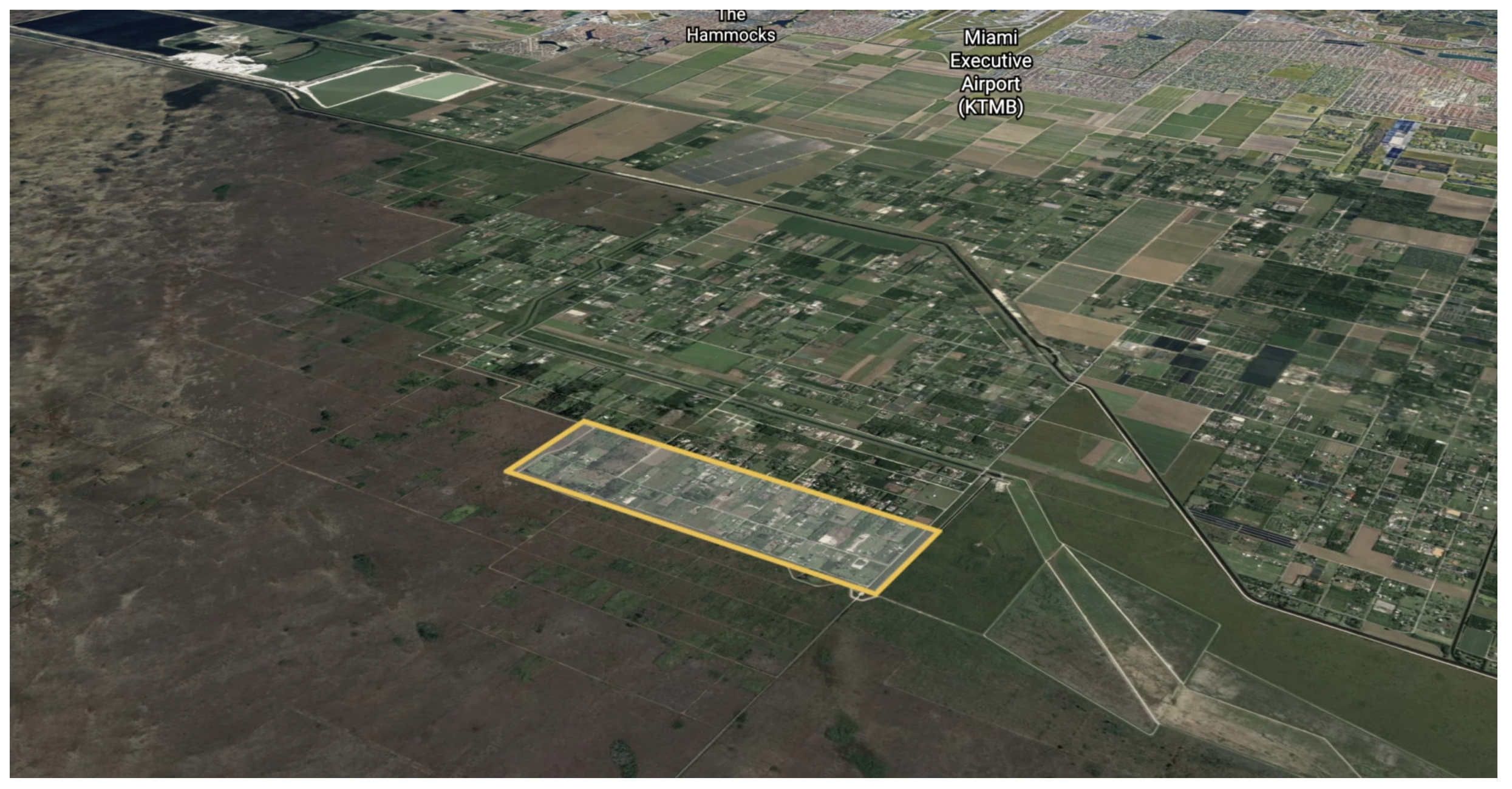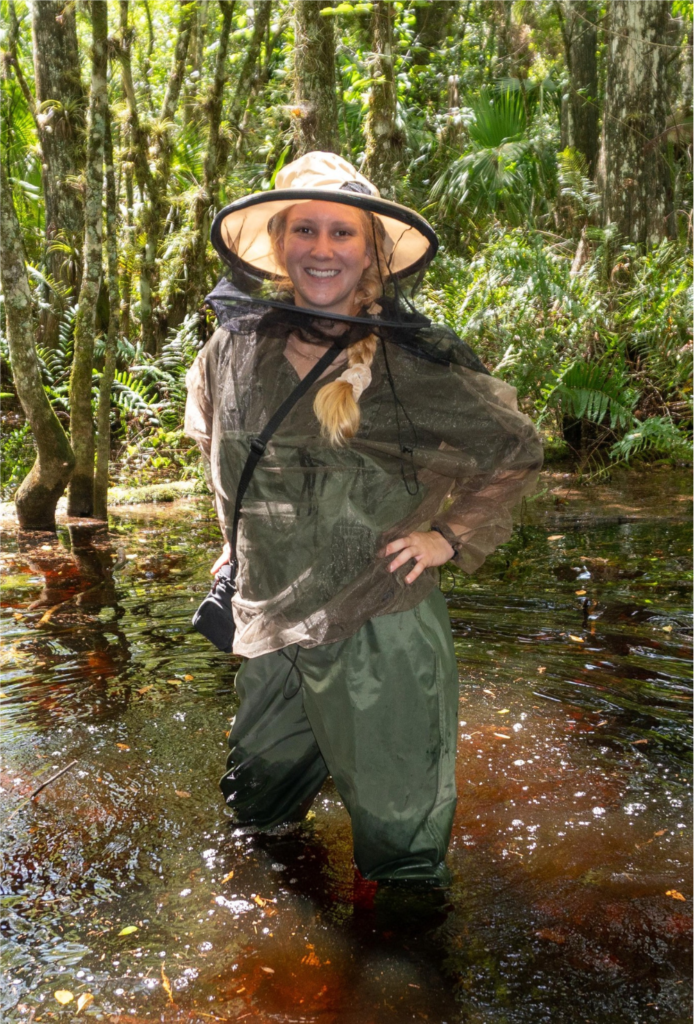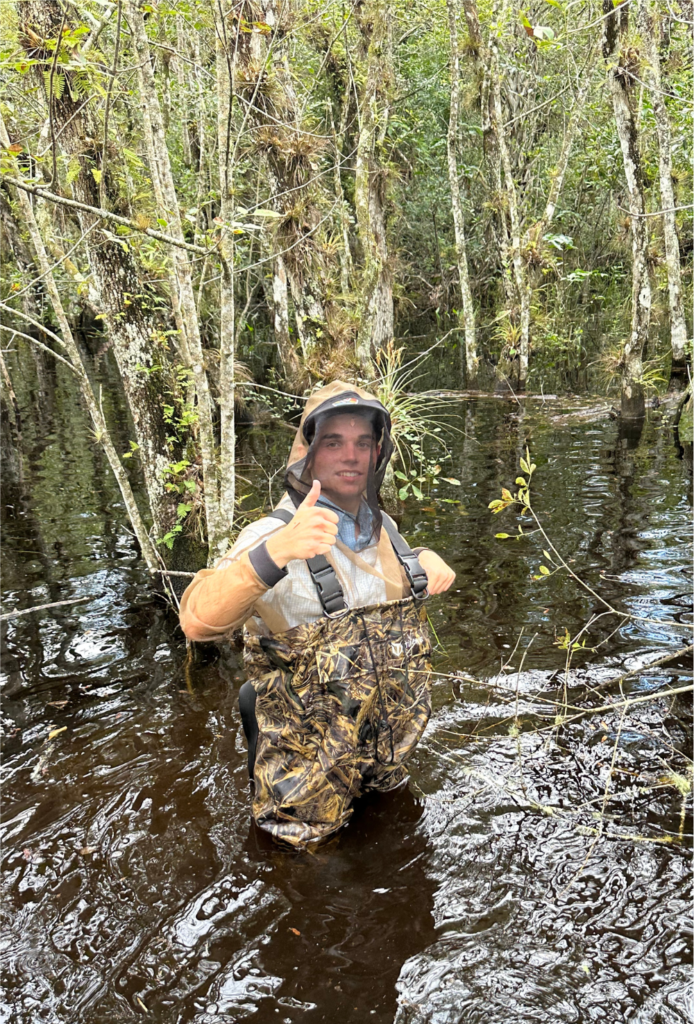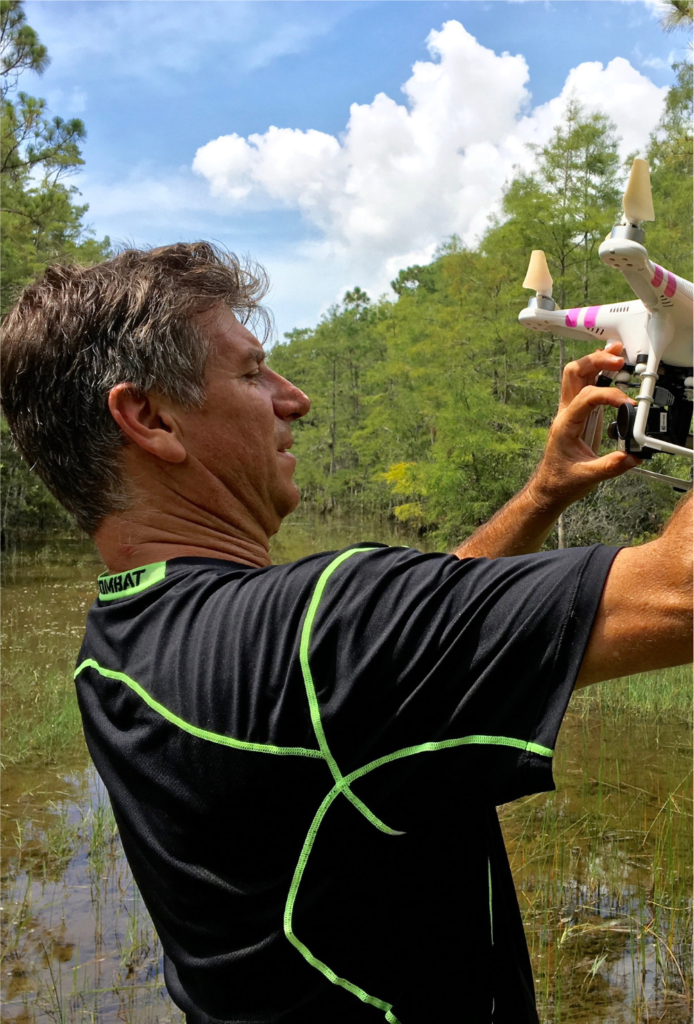On the edge of the Everglades, less than a couple thousand feet from a backdoor entrance to the national park, the Las Palmas neighborhood teeters like a forlorn scheme to conquer the marshes.
Perfectly gridded lots are filled with heavy equipment, plant nurseries and a handful of houses. Goats and dogs wander fenced yards. And after a good rain, there’s water everywhere.
“I left for work in the morning before 8 a.m. and we had puddles. No big deal,” resident Raul Arrazcaeta said in November after a downpour the night before. “When I got home at 5:30, I had five inches of water on my driveway. Right now, I’m sitting on my porch and the only thing that doesn’t have any water is my porch.”
More than just another South Florida neighborhood with a flooding problem, Las Palmas has come to symbolize what happens when water managers try to negotiate with the Everglades — and the price they pay: Flood control for the neighborhood that sits in the footprint of Everglades restoration has so far cost about $180 million, according to estimates by the national park.
“It’s a little thumb sticking out in the Everglades,” Bob Johnson, a hydrologist and director of Everglades National Park’s natural resources center, said during a tour of the area last year. “It just shows you how anomalous this one area is, how hard it is for us to try to keep an area like this dry.”
Now, water managers are back trying to work out a new deal for a neighborhood that some see as blocking billions spent to repair the River of Grass and restore Everglades National Park.
At their last meeting, the South Florida Water Management District governing board wrestled with two options: Construct seepage walls that could extend 65 feet underground to keep water out, or try to buy out land owners. Again.
“We’ve spent a billion dollars,” said board member Ron Bergeron. “And we have this obstacle in our way. ”
What the district decides could have implications for work to come since water leaks from wetlands up and down the park’s borders. Another study being conducted by the district is examining the use of underground seepage walls from Kendall to Florida City.
“We’ve been full of water for almost three months now,” Jorge Luis Garcia complained last month. Garcia bought his four bedroom house that backs up against sawgrass marshes in 1978. “They say they want to control the water. But they didn’t control the water. It’s worse.”
Since Miami-Dade County first zoned the cheap swamp land for industrial use in the 1950s, the swath of land, also known as the 8.5 Square-Mile-Area west of Kendall, has been plagued by flooding.
When the state of Florida and federal government got serious about restoring the Everglades in the late 1980s and early 1990s, the U.S. Army Corps of Engineers — which oversees federal restoration work — tried to buy out landowners, knowing efforts to restore Shark River Slough in the newly expanded park borders would worsen flooding.
Property owners fought the effort, pushed for flood control and ignited a bitter fight.
“The parties traded accusations of stupidity, insensitivity, extremism and racism,” wrote author Michael Grunwald in his book “The Swamp.”
“But there was one point on which they all agreed: This was a bad sign. If an $80 million Everglades restoration project that affected 350 families over eight and a half square miles was hopelessly bogged down, what would happen to an $8 billion [now estimated at $16 billion] Everglades restoration project that affected millions of people over 18,000 square miles.”
So Congress struck a compromise. When it agreed to let the park expand and restore Shark River, it ordered the Army Corps to provide protection from additional flooding caused by restoration efforts.
That compromise ended up laying the groundwork for years of feuding.
“There are all kinds of flood control fights in South Florida because we’ve gotten rid of half the Everglades and the other half is an ecological mess,” Grunwald said. “But what’s so maddening about the 8.5 Square-Mile-Area is that it’s in the Everglades. It’s on the wrong side of the levee. It’s not the part that’s supposed to have flood control.”
It’s also the kind of compromise that has complicated restoration all over the Everglades — from the farmers and ranchers who need to water and drain their fields, and wind up polluting Lake Okeechobee, to the gated communities, shopping malls and other development that paved over marshes.
“It’s this kind of inevitable result of politicians who want to make everybody happy and don’t want to gore anyone’s ox, which is sort of admirable and understandable, but is not the way to restore the Everglades,” Grunwald said.
Flooding is getting worse now because Everglades restoration is picking up speed after decades of plodding along.
Two new bridges over the Tamiami Trail and other projects are putting more water than ever before in Everglades National Park and down Shark River and Taylor Sloughs — the shallow channels that connect the southern Everglades to the River of Grass fed by Lake Okeechobee.
Johnson said the restoration work isn’t necessarily adding more water, but it is keeping more water in the park.
After his tour with scientists from the National Academies of Sciences, he said water seeping from the park remained one of the thorniest problems.
“The limestone aquifer that we sit on is one of the most porous aquifers in the world,” he said. “So while we’re moving forward with restoration and trying to raise water level, if we raise the water level and we don’t treat the seepage, then we’re just going to increase the loss to the eastern areas, increase the risk of flooding, but also just lose our ability to retain water.”
In December, the South Florida Water Management board gave its staff until March to contact landowners to inquire about buying 119 properties, which staff said could cost just over $25 million. They also want to hear more details about constructing flood walls, estimated to cost between $11 million and $15 million, and a fraction of the $16 billion restoration price tag.
As restoration moves forward, Grunwald said the 8.5 Square-Mile Area stands as a stark lesson.
“The concessions that were made to politics to try to keep everybody happy 20 years ago are showing up now in the way that scientists warned about 20 years ago,” he said. “You know, nobody’s going to lose their flood control. Nobody’s going to lose their water supply. We’re not going to have any requirements for water conservation or smart growth. Instead, we’re going to just ask the Army Corps of Engineers, which is not exactly Picasso, to paint this restoration masterpiece. At the same time, we’re shrinking the canvas every day.”
Meanwhile in Las Palmas, Garcia said after 40 years, he’s fed up and ready to strike a deal.
“If they want to have a meeting or whatever, I’m ready to talk to them. I’m willing to work everything out,” he said. “The way that we are right now, we can’t live like that. There’s water everywhere and the water doesn’t go away.”
[/fusion_text][/fusion_builder_column][/fusion_builder_row][/fusion_builder_container]












